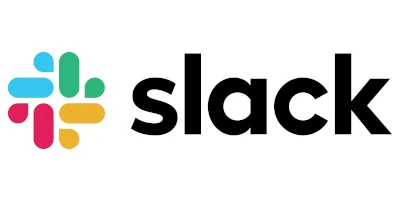What is an AI Prompt CMS?

Amanda Jones

In the world of generative artificial intelligence (AI), prompts are the backbone of interaction between humans and large language models (LLMs), such as ChatGPT. A prompt is text or other input that guides an LLM or agent to generate the desired output—anything from a short story to a product description to a software code snippet. But like any piece of content, prompts must be planned, created, tested, optimized, and managed over time. This evolving need has given rise to the concept of a Prompt CMS: a content management system tailor-made for AI-based prompts.
Below, we’ll explore the basics of a AI Prompt CMS, why it’s crucial, and how a platform like CrafterCMS can empower teams to develop, deploy, version-control, and optimize their AI prompts in an enterprise-friendly way.
Why Do We Need a AI Prompt CMS?
When you think of a content management system, you typically imagine a platform that handles website pages, blog posts, or marketing collateral. However, if you replace “website content” with “AI prompts,” you quickly see how similar the challenges are:
- Creation & Authoring: Writing prompts is an art. You need an environment to craft, refine, and preview them before they’re pushed into a production setting.
- Version Control: AI prompts often undergo multiple iterations. Versioning helps track changes and experiment with new prompt variations without losing old ones.
- Testing & Validation: Just like you test website content across different browsers or devices, AI prompts must be tested across different AI models and scenarios.
- Collaboration & Workflow: Prompts usually aren’t created in a silo—teams of engineers, data scientists, and content writers all play a part.
- Publishing & Optimization: Once validated, prompts should be published into production environments and monitored for performance. Iterative feedback loops allow for ongoing optimization.
In short, a Prompt CMS handles the entire lifecycle of AI prompts, providing a structured space to iterate quickly, collaborate seamlessly, and maintain consistent quality.
Benefits of an AI Prompt CMS
- Faster Iterations: Prompt changes can move through a well-defined pipeline, reaching production swiftly once approved.
- Reduced Errors & Inconsistencies: Version-controlled workflows prevent prompts from being accidentally overwritten or confused.
- Improved Collaboration: Multiple stakeholders can safely work on prompts simultaneously, confident in their ability to integrate changes later.
- Historical Insights: Detailed commit histories and analytics can show how prompts performed over time, guiding future optimizations.
- Enterprise-Grade Security & Governance: Using a trusted CMS like CrafterCMS ensures your AI prompts are housed within robust security and permissions frameworks.
Introducing CrafterCMS for AI Prompt Management
CrafterCMS is a modern, open-source, AI-enabled content management platform that can be used to manage not only conventional web content, but also AI prompts. Its architecture and feature set are particularly well-suited for treating prompts as first-class digital assets.
1. Git Repository for Version Control
One of CrafterCMS’s foundational features is its Git-based content repository:
- Branching & Merging: During large scale development efforts, AI prompts can live in their own branch, allowing teams to experiment with different variations. Once a prompt is tested and finalized, it can be merged back into the main “production” branch.
- History & Rollback: Every change to a prompt is recorded as a Git commit. If a new version doesn’t work out, you can roll back to any previous commit quickly.
This approach allows for a clean, auditable history of every revision to your AI prompts.
2. Team Collaboration
Creating effective prompts often involves multiple stakeholders—AI engineers, domain experts, product managers, and content strategists. CrafterCMS provides:
- Role-Based Permissions: Different roles can be set up for prompt authors, reviewers, and publishers. This ensures the right people can access the right prompts at the right time.
- In-Context Editing & Preview: While typically used for visual web content, CrafterCMS can be adapted to preview AI-generated outputs. For example, teams can see how prompts render text responses from various AI models in a controlled environment.
3. DevContentOps
Borrowing from DevOps principles, DevContentOps is a key philosophy for CrafterCMS, which integrates development, content management, and operations into a single smooth workflow:
- Continuous Integration/Continuous Deployment (CI/CD): With Git at its core, CrafterCMS can be hooked into CI/CD pipelines, automatically testing prompts or changes as they’re committed.
- Automated Testing: You can set up test suites to verify prompt performance across different LLMs or use cases. If a prompt fails a certain threshold, it won’t be merged or deployed.
- Seamless Collaboration Between Dev and Content Teams: Rather than developers building an AI pipeline separately while content teams struggle with manual workflows, everything can converge in a single platform.
4. Content & Prompt Lifecycle Management
Prompts, like web articles, go through a lifecycle:
- Authoring: Writers, data scientists, developers and others draft prompts for various use cases.
- Testing: Users run prompts through different AI models or scenario tests to validate performance and conformance with guidelines.
- Approval: Stakeholders review the prompt, providing feedback or approving it for release.
- Publishing: The prompt is deployed to the production CMS environment. This might be to the production authoring environment, or a public-facing digital experience application like a chatbot.
- Optimization: After collecting user or system feedback, the prompt gets refined for better outcomes.
CrafterCMS brings each of these stages under one roof, with built-in workflows, notifications, and collaboration tools to keep everything running smoothly.
5. Scalable, Headless Architecture
CrafterCMS’s headless capabilities mean you can integrate it with various AI platforms and front-end experiences:
- API-Driven: Integrate with AI services and LLMs via RESTful or GraphQL APIs. This makes it straightforward to create the most productive AI-enabled content management experience, and to deliver smart end user applications.
- Multi-Channel Consistency: If your organization has multiple applications that leverage AI prompts—like chatbots, knowledge bases, or interactive user interfaces—CrafterCMS ensures all of them are using the most up-to-date and correct versions.
Summary
An AI Prompt CMS is more than just a place to store text inputs for AI. It’s an orchestrated environment for prompt creation, version control, testing, review, and continuous optimization. Whether you’re building an enterprise chatbot, a creative writing assistant, or AI-driven shopping experience, adopting a structured workflow for your prompts is essential to achieving consistent, high-quality results.
By leveraging a platform like CrafterCMS, organizations can seamlessly bring AI prompts into a familiar CMS workflow. The combination of Git-based version control, team collaboration features, and DevContentOps capabilities provides a powerful foundation for managing the entire lifecycle of your AI prompts—allowing you to innovate quickly while maintaining security, consistency, and operational excellence.
To learn more about CrafterCMS's AI features and capabilities, watch our recorded webinar: The Future of GenAI and Content Management











